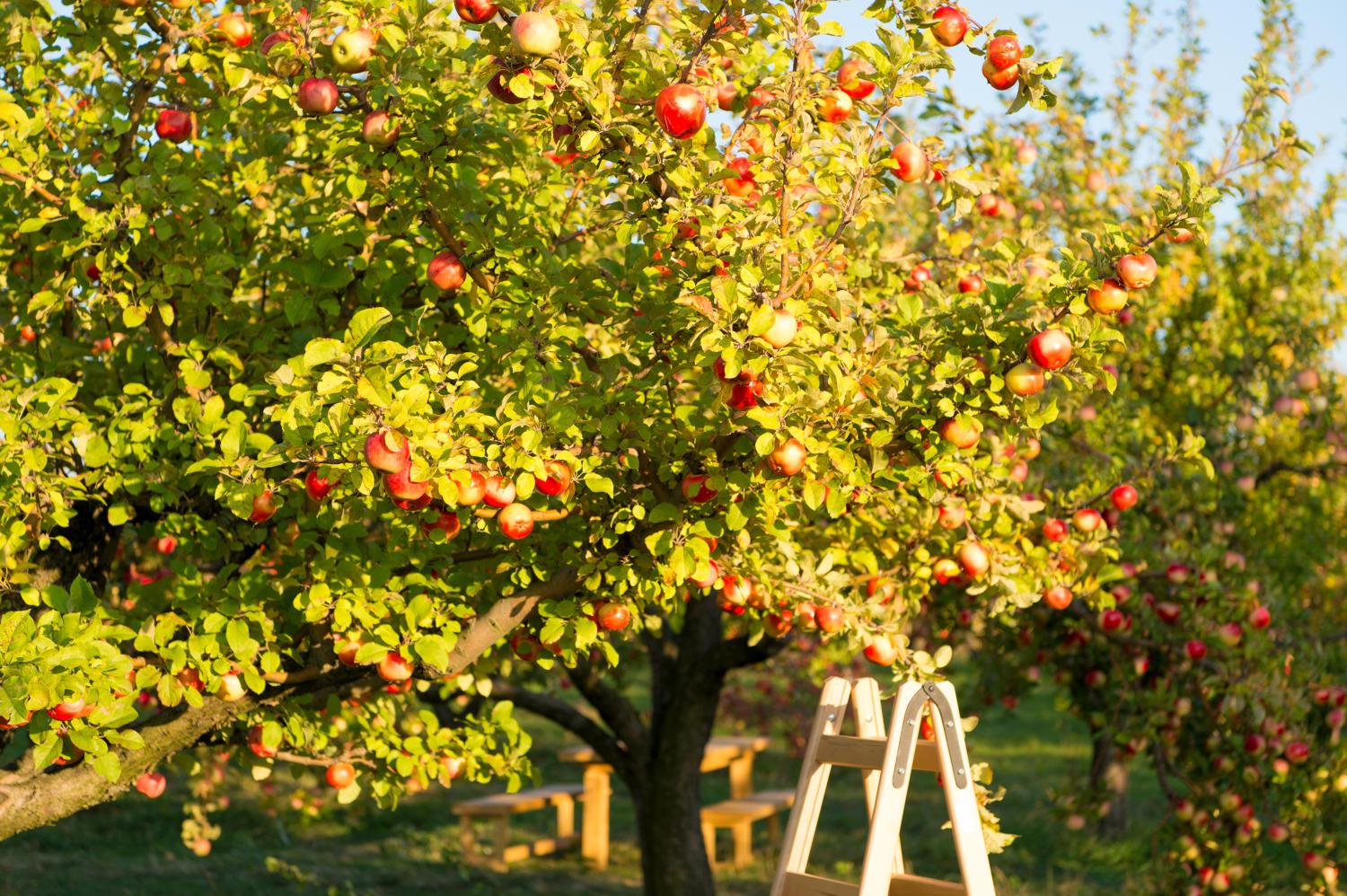
You may remember that last month we took a look at the what, where and when for planting fruit trees. This time we’ll dig a little deeper and consider the various forms of fruit trees that can be grown, alongside the vital question of how to ensure trees stay a suitable size for the space you’ve got available.
Let’s start with the ‘form’ of tree. It’s important to bear in mind that most orchard fruit — or ’top’ fruit in horticultural speak—don’t have to be grown as a conventional ‘trees’ with a trunk and branches. Trees often do work best, especially when there’s a reasonable amount of room, but pruning and picking may still be a challenge. Where space is limited the best option can be a ‘bush.’ These are actually trees that are kept small to no more than two or three metres in height, with a squat trunk and short branches that radiate outwards. The ideal shape is often said to be that of a stubby wine glass with an open centre that aids light penetration. However, pruning to keep a bush open-centred is not always easy, so it’s worth considering other forms. This is especially true for pears which tend to be upright and difficult to maintain as a bush when young.
The other most suitable forms for garden use are cordon, espalier and fan. A cordon is best described as a small tree, usually trained as a single stem— although double or triple stemmed types are possible— with short side branches along most of its length on which fruit is borne. Cordons are often cultivated at a 45 degree angle to restrict vigour and are suitable for apples and pears but not for plums which are more difficult to restrain. It is possible to plant at a very close spacing, usually in rows supported on a framework. This means more varieties can be squeezed in than would be possible with bush trees. Espaliers and fans need more room and are a good option where walls or fences are available. Both are trained so that the branches grow flat rather than billow out. Espaliers are suitable for apples and pears only while fans work for all top fruit, including plums. The main difference is that espaliers should have branches in evenly spaced tiers while the aim with a fan is to have multiple branches spreading from a short trunk in a ‘fan’ shape. Trees in these shapes can be purchased ready-formed but this tends to be an expensive option. An alternative is to buy baby trees (maidens) and train them; it’s less complex than you might think. Once mature, trees in these forms are pruned in late summer. Again, this is not as difficult as might be supposed.
To help ensure fruit trees don’t outgrow their allotted space it’s important to buy them with an appropriate rootstock. Nearly all fruit trees are not grown on their own roots. Instead they are grafted — that is a twig (technically the scion) of a particular variety is joined to a rooted stem (rootstock) of another tree— the purpose of this is to control the tree’s vigour. Rootstocks have been developed to control the height and spread of fruit trees as most types and varieties would grow into large trees if they were cultivated on their own roots. This is where it begins to get complex. Apples, for instance, are usually on rootstocks prefixed with an M, for example, M9, M25, M26, M27, etc. so that they sound a bit like motorways. Confusingly, there’s no logical sequence to the numbering: for example, M9 is weaker than M26, but M25 is the most vigorous, while M27 will give the smallest tree of all. The best advice I can give here is to use the Web for further information but, most of all, never buy a fruit tree without knowing the rootstock onto which it’s grafted.
Next month we’ll end our overview of fruit tree planting with a short summary on choosing varieties and a few words on how to put trees in the ground.











Add a comment